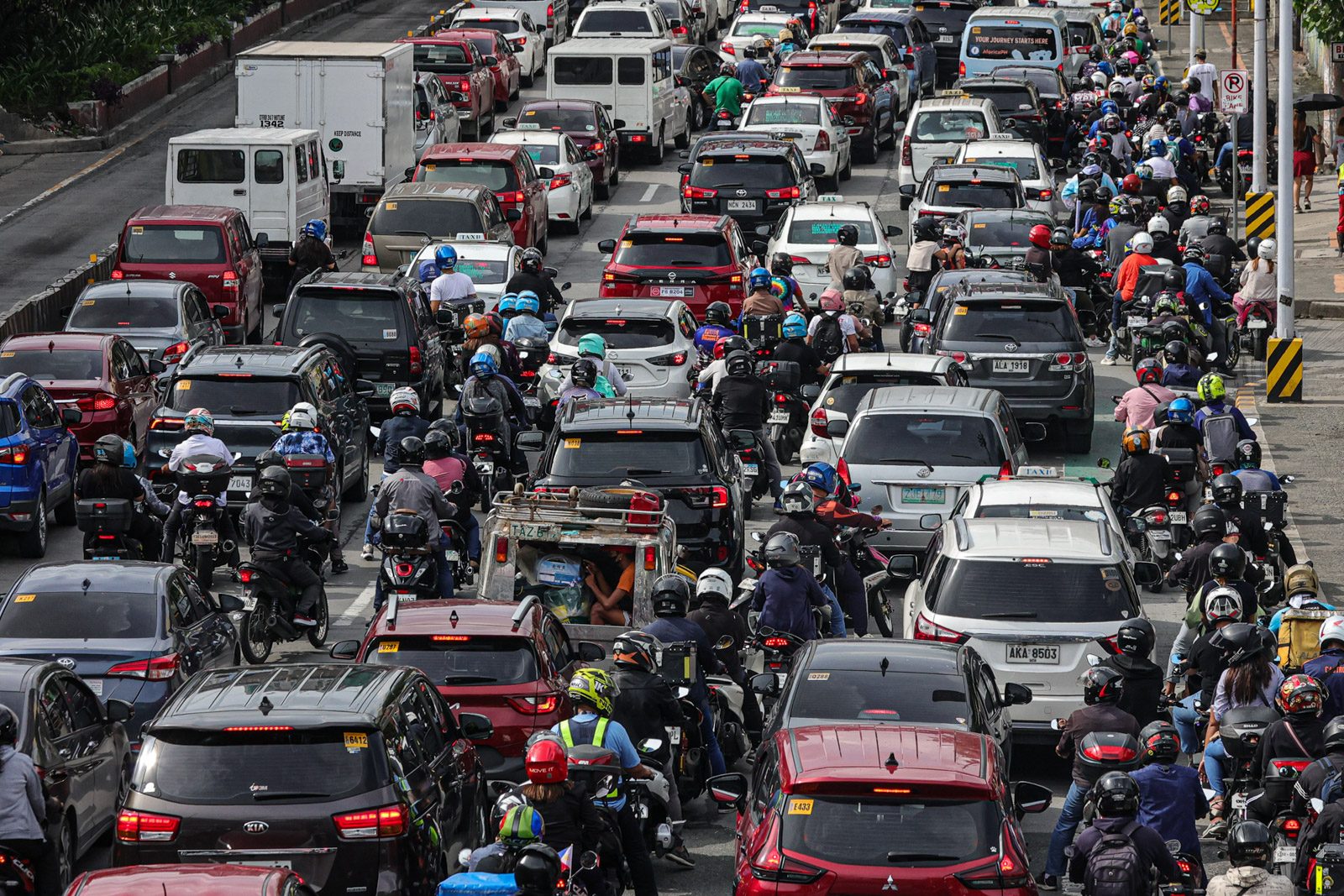SUMMARY
This is AI generated summarization, which may have errors. For context, always refer to the full article.

MANILA, Philippines – If you’ve ever felt bogged down while traveling around the capital region, your frustrations are valid: data shows that Metro Manila is in fact the world’s slowest metro area to drive in.
Out of 387 cities across 55 countries, Metro Manila topped the 2023 TomTom Traffic Index list of metro areas with the slowest travel time.
On average, it takes 25 minutes and 30 seconds to travel 10 kilometers in Metro Manila. By comparison, driving the same distance only takes 8 minutes and 40 seconds in Kansas City, an American city that boasts one of the quickest average travel times.
Note that Metro Manila’s distinction is for the worst traffic in a metro area, which the TomTom Traffic Index defines as “the city and rural areas in close proximity.” What if you look at Manila’s city center alone, specifically a circle spanning 10 kilometers around the busiest parts of the metro?
The situation is still bad. In terms of average travel time in city centers, Manila ranks the ninth worst, with a travel time of 27 minutes and 20 seconds. Although Manila doesn’t have the slowest city center in the world – a distinction which belongs to London with an average travel time of 37 minutes and 20 seconds – it does have the worst record among Southeast Asian cities. The next worst in the region is Taichung in Taiwan, which holds 11th place with an average travel time of 26 minutes and 50 seconds.
Rush hour woes
Driving in Manila on a regular day is already bad enough, but data shows that it gets significantly worse during the Christmas “carmaggedon.” In fact, the worst time to travel in Manila in 2023 was recorded on December 15, when average travel time for 10 kilometers slowed to 31 minutes and 50 seconds.
But traffic can get just as bad, or even worse, during the rush hour of the work week. If you’re looking to avoid getting stuck in a sea of red lights, try to stay off the roads from 5 pm to 7 pm on Fridays, as the average travel time reaches 35 minutes and 30 seconds.
TomTom’s data also shows that rush hour traffic jams have gotten worse, with Filipinos losing up to 117 hours a year due to congestion in 2023 – 12 hours and 51 minutes more than the average time lost in 2022.
Find the full TomTom Traffic Index ranking here.
What does the government say?
The Department of Transportation (DOTr) has already reacted to the study’s findings.
In a statement, the DOTr said: “Our ongoing road transport infrastructure projects are directed at improving commuter experience while addressing worsening traffic in highly urbanized areas. The top ranking of Metro Manila in world traffic poses a challenge not just for DOTr but other agencies as well to be creative at finding lasting solutions to metro traffic.”
The DOTr also said they would “fast-track” road projects pursued by government agencies alongside the private sector.
While the government didn’t highlight any specific project or program to tackle traffic, one of the DOTr’s most publicized – and most controversial – initiatives is the Public Utility Vehicle Modernization Program. Under it, the DOTr plans to consolidate and upgrade the hundreds of thousands of PUVs in the country, including jeepneys.
The government hopes that consolidating jeepneys into cooperatives and corporations, as well as rationalizing their routes and changing their units into “modern jeepneys,” will lead to safer and faster commuter trips. However, the program has also raised opposition from drivers and operators who worry the program will cost them their livelihoods. (READ: Anti-poor? How gov’t defends PUV modernization, why jeepney stakeholders oppose it)
Other road projects to be funded in 2024 revolve around buses: the continuing EDSA Busway project, and the foreign-assisted Davao public transport modernization project and Cebu Bus Rapid Transit project.
Meanwhile, the bulk of the DOTr’s budget will go toward building big-ticket railway projects, like the North-South Commuter Railway and the Metro Manila Subway, which could indirectly reduce the number of cars on the road. – Rappler.com
Add a comment
How does this make you feel?




![[Under 3 Minutes] When will we see modern jeepneys on the road?](https://www.rappler.com/tachyon/2024/04/francisco-motors-modern-jeepney-prototype-1.jpg?resize=257%2C257&crop=590px%2C0px%2C1012px%2C1012px)
There are no comments yet. Add your comment to start the conversation.